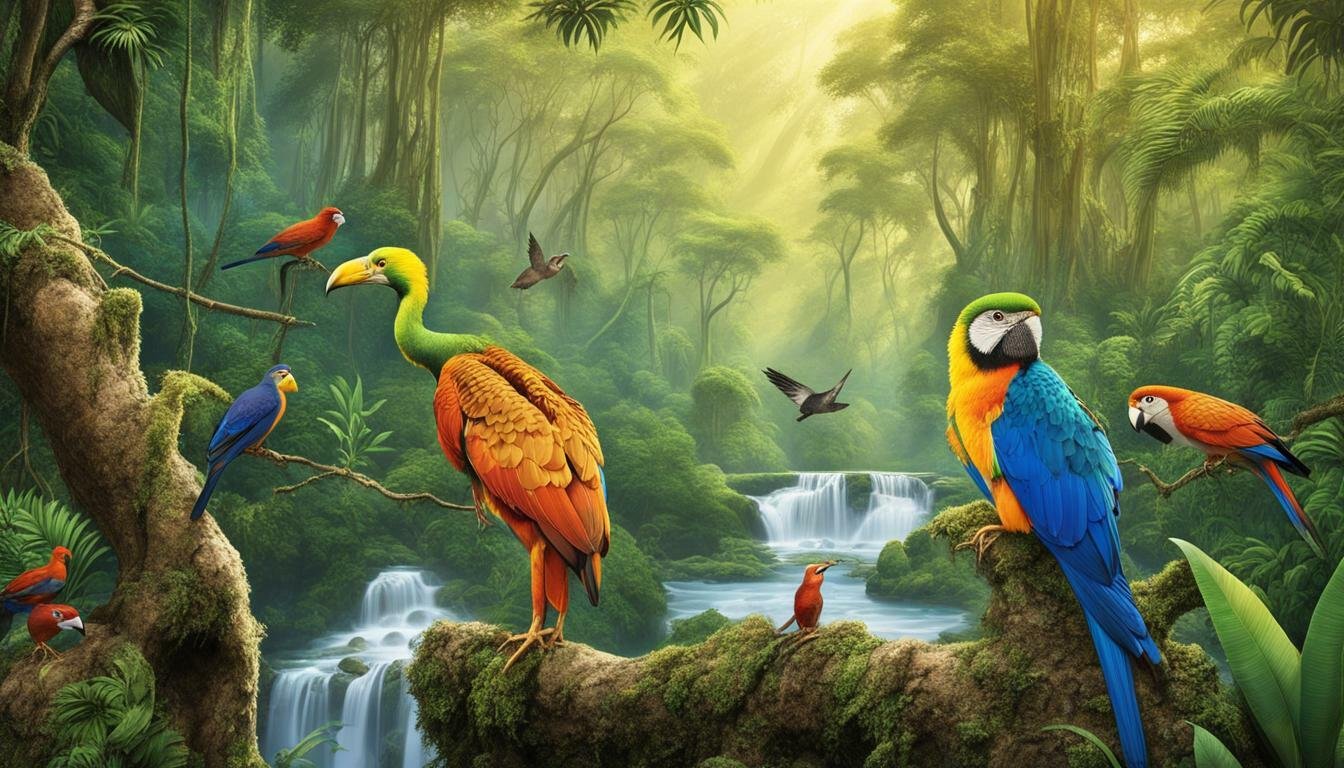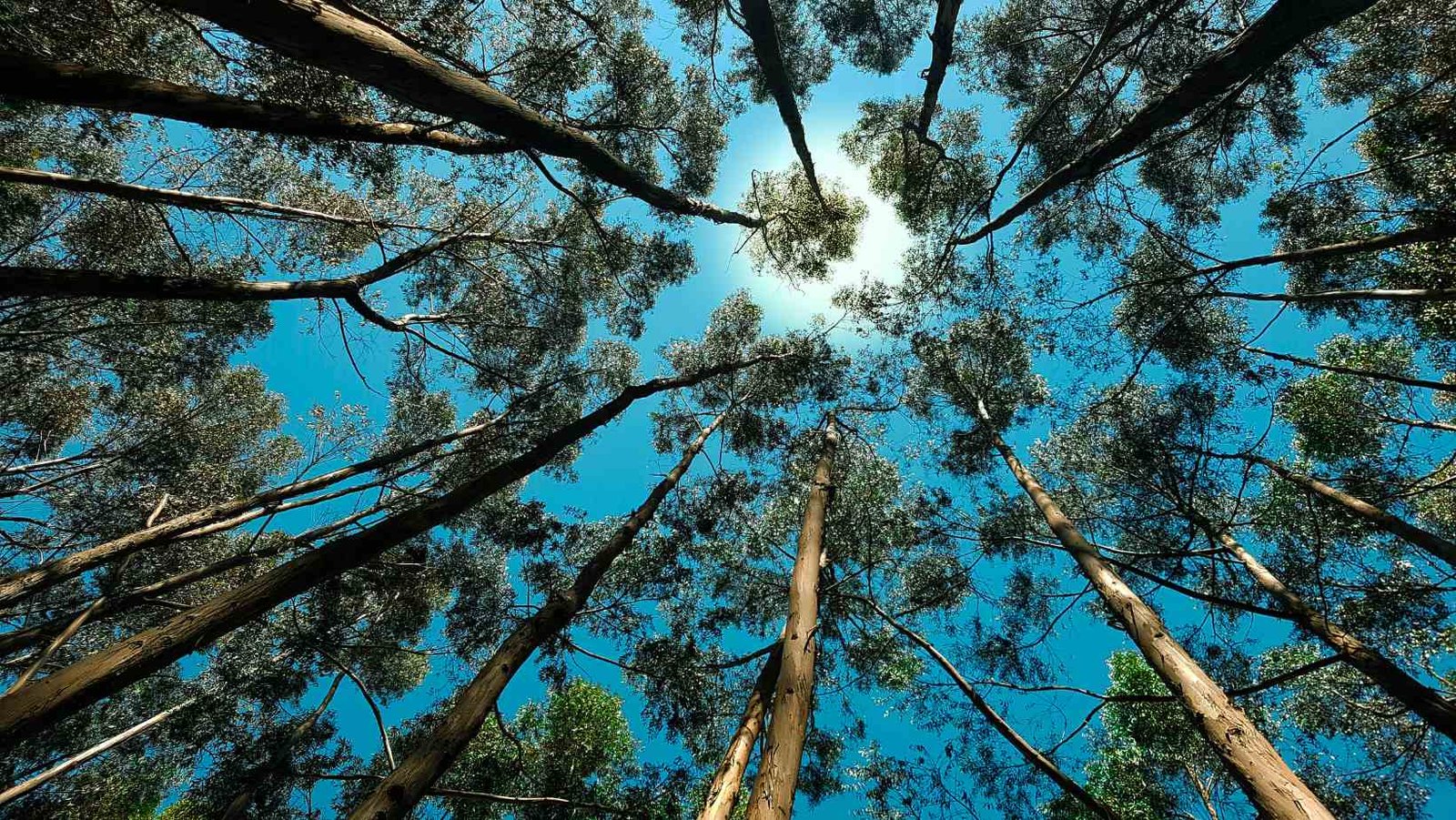Philippines Biodiversity and the Built Environment
Did you know that the Philippines is home to two-thirds of the Earth’s biodiversity? This Southeast Asian country, known for its stunning landscapes and vibrant ecosystems, ranks fifth in the world for the number of plant species. Its unique animal and plant species can be found nowhere else on the planet. However, this rich biodiversity is under threat from various human activities, including habitat loss and climate change.
Key Takeaways:
- The Philippines is a mega-biodiverse country with two-thirds of the Earth’s biodiversity.
- It ranks fifth in terms of plant species diversity.
- Habitat loss and climate change pose significant threats to the country’s unique biodiversity.
- Conservation efforts are vital for protecting and preserving the Philippines’ rich ecosystems.
- By promoting sustainable development and implementing green infrastructure, we can ensure the conservation of marine and terrestrial biodiversity.
The Philippines’ Unique Plant Species
The Philippines is renowned for its remarkable plant biodiversity, with approximately 9,250 vascular plant species thriving within its diverse ecosystems. What sets the Philippines apart is that one-third of these plant species are endemic, meaning they are found exclusively within the country’s borders.
Among the notable endemic plant species in the Philippines are gingers, begonias, gesneriads, orchids, pandans, palms, and dipterocarps. These plants have evolved and adapted to the distinct environmental conditions found in the Philippines, resulting in unique and diverse plant life.
Endemic gingers, characterized by their vibrant flowers and ornamental leaves, add colour and beauty to the Philippine landscapes. The begonias, with their exquisite foliage and delicate flowers, are a true testament to the country’s floral diversity.
The gesneriads, which include popular houseplants like the African violet, thrive in the Philippines’ tropical climate. Orchids, known for their exceptional beauty and variety, are abundant in the country, with many species only found in the Philippines.
Pandans, with their long, narrow leaves and distinctive aroma, are commonly found in coastal regions. Palms, such as the majestic coconut palm, contribute to the lushness of the Philippine scenery. Dipterocarps, towering trees that dominate the country’s forests, provide vital habitats for numerous plant and animal species.
The unique plant species found in the Philippines are integral to its rich ecological heritage. They support diverse ecosystems and play a crucial role in maintaining the country’s overall biodiversity.
“The Philippines’ endemic plant species, including gingers, begonias, gesneriads, orchids, pandans, palms, and dipterocarps, are a testament to the country’s remarkable botanical wealth.”
The Bird Species of the Philippines
The Philippines is a haven for bird enthusiasts, boasting a diverse array of bird species. With over 530 different bird species, the country is home to a rich avian population. What makes the Philippines even more unique is that approximately 35% of these bird species are endemic, meaning they are found exclusively in the Philippines.
One of the most iconic and endangered bird species in the Philippines is the Philippine eagle. Known as the “King of the Philippine Birds,” this majestic creature is a symbol of national pride and conservation efforts. With its striking appearance and impressive wingspan, the Philippine eagle is a sight to behold.
The Philippines also has a distinction of having a single endemic bird family, the Rhabdornithidae, represented by the Philippine creepers. These birds are known for their climbing abilities and distinctive calls, adding to the country’s avian diversity.
“The Philippines provides a vital habitat for a wide range of bird species, including several endemic ones. Protecting and preserving these birds, along with their habitats, is crucial for maintaining the country’s unique biodiversity.”
Conservation efforts in the Philippines are focused on safeguarding the endangered bird species and their habitats. Through initiatives such as habitat restoration, captive breeding programs, and strict regulations against poaching and illegal trade, significant progress has been made in preserving these sensitive ecosystems.
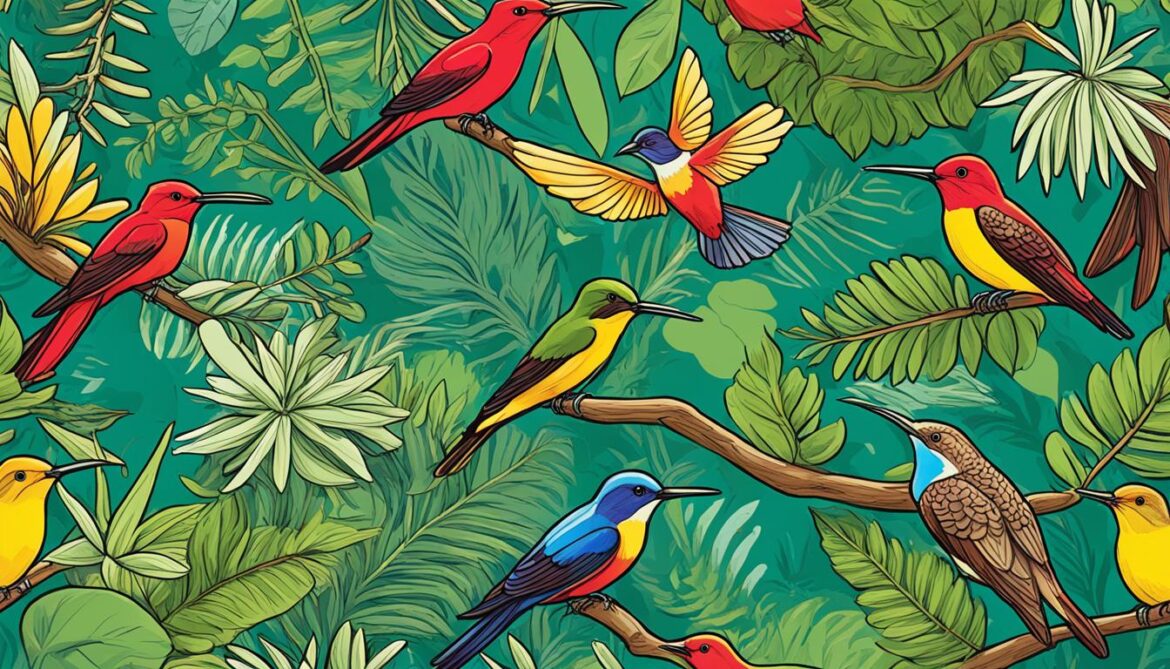
This image showcases the stunning beauty of the Philippines bird species. From colorful plumage to intricate patterns, these birds are a testament to the country’s breathtaking biodiversity.
Mammals in Danger
The Philippines is home to a diverse array of mammal species, with over 165 unique species found within its borders. What makes these mammals even more special is that more than 60% of them are endemic, meaning they are found nowhere else in the world.
However, the rich mammalian biodiversity of the Philippines is facing significant threats. Several critically endangered mammal species are at risk of extinction if urgent conservation measures are not taken. These include the tamaraw, the Philippine freshwater crocodile, and the Visayan warty pig.
The Tamaraw
The tamaraw, also known as the Mindoro dwarf buffalo, is one of the most endangered mammal species in the Philippines. It is endemic to the island of Mindoro and is characterized by its small size, distinctive V-shaped horns, and robust build. Habitat loss and fragmentation, as well as poaching, have severely impacted the tamaraw population, pushing it to the brink of extinction.
The Philippine Freshwater Crocodile
The Philippine freshwater crocodile, scientifically known as Crocodylus mindorensis, is another critically endangered mammal species in the Philippines. This species is endemic to the country and is predominantly found in freshwater habitats. Destruction of its habitat, illegal hunting, and collection for the exotic pet trade have led to a significant decline in the Philippine freshwater crocodile population.
The Visayan Warty Pig
The Visayan warty pig is an endangered mammal species endemic to several islands in the Visayas region of the Philippines. It is known for its distinctive appearance, characterized by warts on its face and a bristly coat. The Visayan warty pig is threatened by habitat loss due to deforestation and hunting for food.
To protect these endangered mammal species and preserve their habitats, conservation efforts are in place. These efforts focus on implementing strict law enforcement to prevent poaching, establishing protected areas to safeguard their habitats, and raising awareness among local communities about the importance of conservation.
“Conservation is essential to ensure the survival of these remarkable mammal species. By protecting their habitats and raising awareness, we can contribute to their conservation and ensure a sustainable future for these unique creatures.”
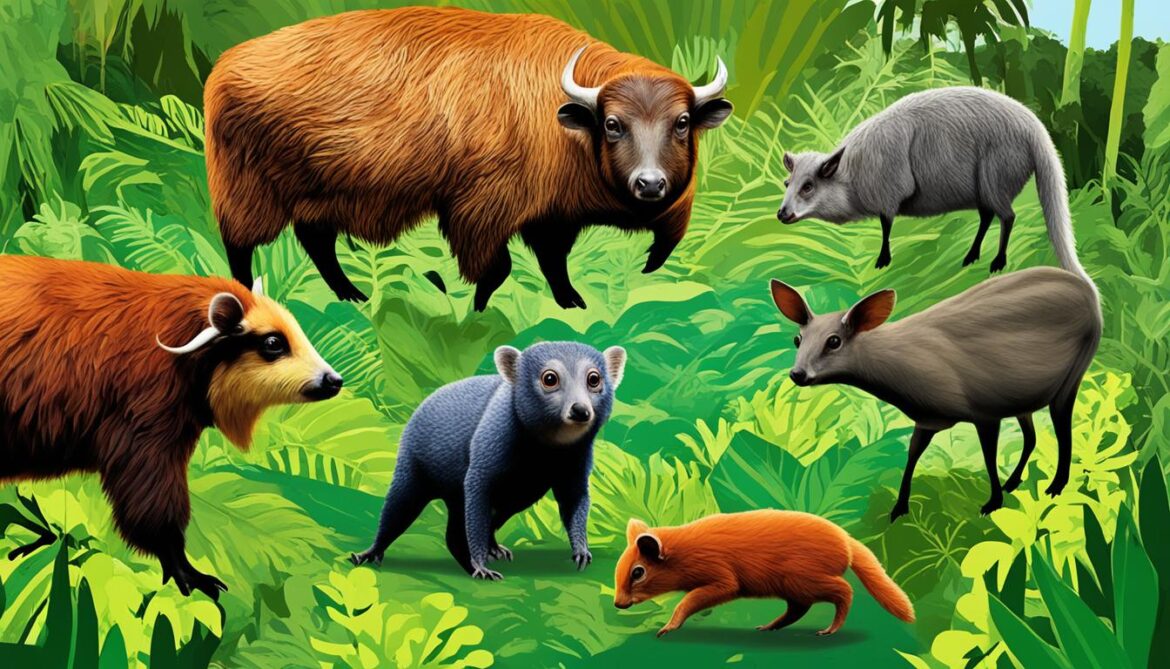
The image above showcases the rich diversity of mammal species in the Philippines. It serves as a visual reminder of the unique and endangered wildlife that needs our conservation efforts to thrive.
Unique Reptiles and Amphibians
The Philippines is known for its remarkable biodiversity, with a diverse array of reptile and amphibian species. Many of these species are endemic to the country, meaning they can only be found there. These unique reptiles and amphibians contribute to the country’s rich natural heritage and play important roles in their respective ecosystems.
One notable reptile species found in the Philippines is the Philippine crocodile, also known as the Mindoro crocodile. Unfortunately, this critically endangered reptile is one of the most threatened species in the world. Conservation efforts are underway to protect its habitat and prevent further population decline.
“The protection of these unique reptiles and amphibians is crucial for preserving the country’s biodiversity and maintaining the ecological balance.”
Amphibians, such as frogs and salamanders, are also abundant in the Philippines. These amphibians are known for their adaptation to both land and water environments, playing important ecological roles as predators and prey.
To raise awareness about the importance of protecting these species, educational campaigns and conservation programs have been implemented. By understanding the value of reptiles and amphibians in maintaining healthy ecosystems, the public can contribute to their conservation efforts.
Let’s take a closer look at some of the unique reptile and amphibian species found in the Philippines:
| Species | Scientific Name | Status |
|---|---|---|
| Philippine Crocodile | Crocodylus mindorensis | Critically Endangered |
| Philippine Tarsier | Tarsius syrichta | Near Threatened |
| Phantom Forest Frog | Platymantis pseudodorsalis | Critically Endangered |
| Philippine Warty Frog | Sylvirana phaea | Vulnerable |
These are just a few examples of the diverse reptile and amphibian species found in the Philippines. Protecting their habitats and implementing sustainable practices are essential for their survival and the preservation of the country’s unique biodiversity.
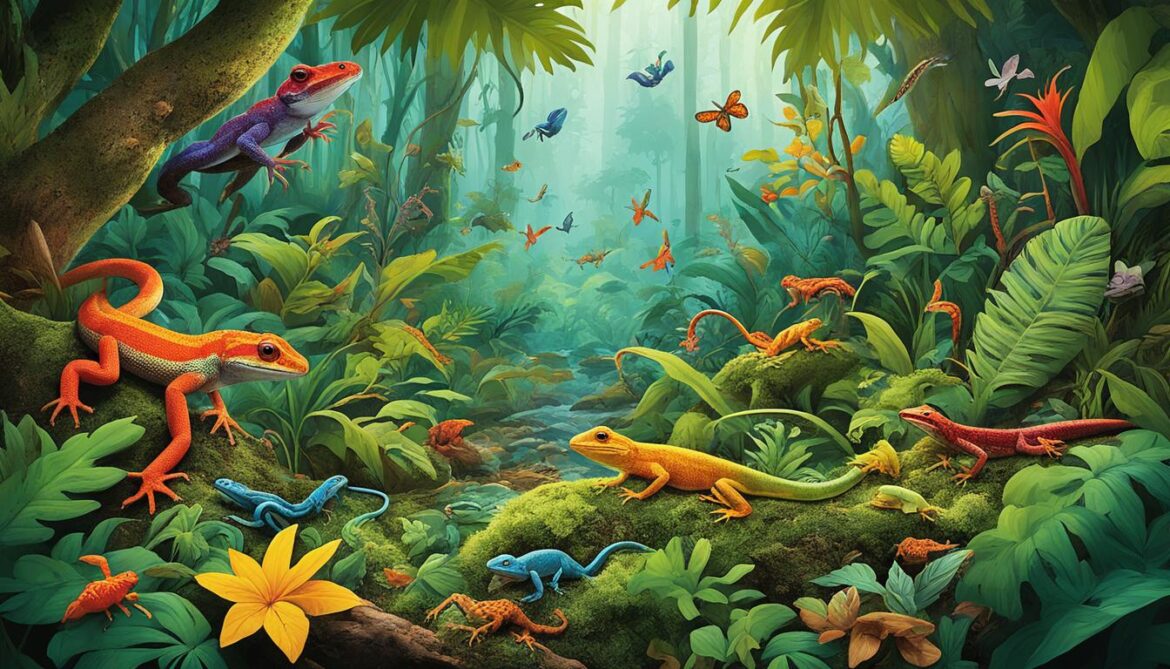
Diverse Marine Biodiversity
The Philippines is known for its exceptional marine biodiversity, thanks to its location within the Coral Triangle. This region is renowned for its rich and diverse marine ecosystems, making it a hotspot for marine life. One fascinating resident of the Philippine waters is the majestic Philippine eagle ray, a graceful creature that captivates divers and snorkelers alike.
However, the marine ecosystem in the Philippines faces significant threats. Declining reef cover, seagrass cover, and declining fishery production call for urgent conservation efforts. The destruction of coral reefs, which serve as vital habitats for a multitude of marine species, poses a grave risk to the overall health of the marine ecosystem.
“The delicate balance of marine life in the Philippines is at stake. We must act now to protect our extraordinary marine biodiversity before it’s too late.”
Efforts are underway to safeguard critical marine habitats, such as coral reefs and mangroves, which are integral to the survival and conservation of marine species. By protecting these habitats, we can help maintain a sustainable environment for marine organisms and preserve the delicate ecological balance.
Threats to Marine Biodiversity
- Declining reef cover
- Seagrass cover loss
- Declining fishery production
Table: Marine Biodiversity Statistics in the Philippines
| Category | Statistics |
|---|---|
| Coral Reefs | Approximately 26,000 square kilometers |
| Seagrass Beds | Approximately 175,000 hectares |
| Marine Protected Areas | Over 1,100 established, covering 2 million hectares |
| Fish Species | Over 2,500 species |
A Call for Conservation
Conservation efforts play a crucial role in preserving the rich marine biodiversity of the Philippines. It is imperative that we continue to protect and restore critical marine habitats, implement sustainable fishing practices, and raise awareness about the importance of marine conservation.
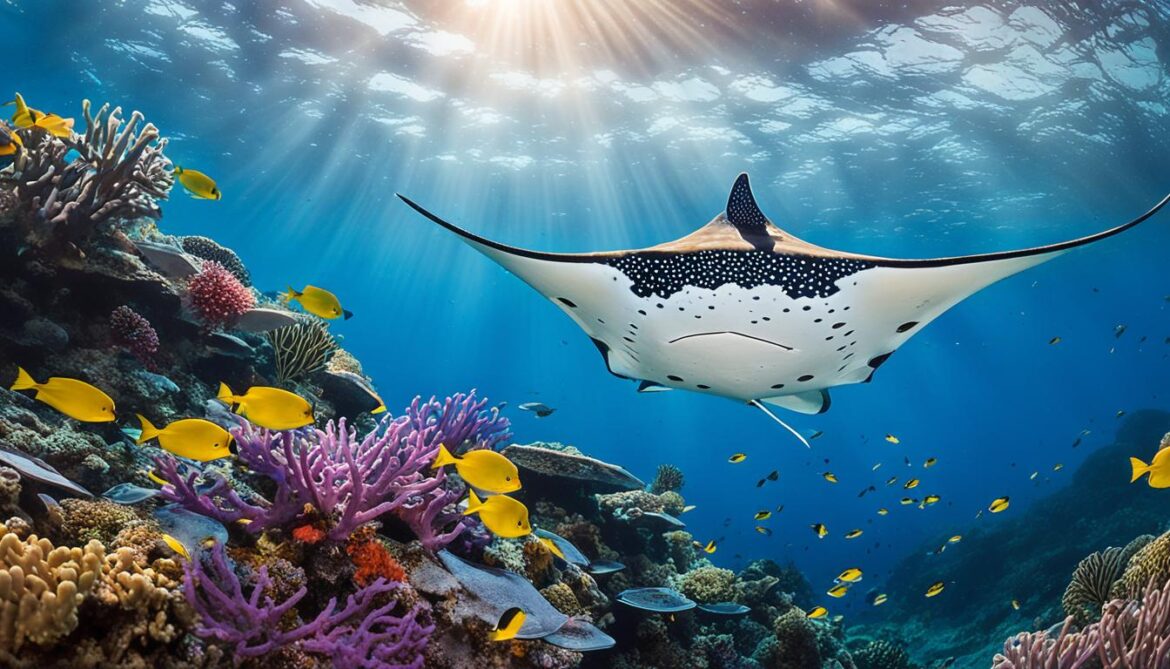
By working together, we can ensure the survival of marine species, maintain healthy ecosystems, and secure the livelihoods of communities dependent on the oceans. Let us take action now to safeguard the marine biodiversity of the Philippines for future generations to come.
Threats to Biodiversity in the Philippines
Biodiversity in the Philippines faces numerous threats resulting from human activities, including extractive industries such as mining, logging, and fishing. These industries exploit natural resources, leading to habitat destruction, loss of species, and degradation of ecosystems. Another significant threat is the country’s increasing population density, which further exacerbates the pressure on the environment. Additionally, conflicting land use policies create challenges in implementing effective conservation measures.
Extractive industries pose a significant threat to biodiversity in the Philippines. Logging activities contribute to deforestation, leading to the destruction of natural habitats and the displacement of numerous plant and animal species. Mining operations, especially those involving open-pit methods, result in massive land disturbances and pollution, affecting both terrestrial and aquatic ecosystems. Overfishing and destructive fishing practices further deplete marine resources and disrupt delicate marine ecosystems.
The Philippines’ population density presents an ongoing challenge for biodiversity conservation efforts. As the population grows, the demand for resources increases, placing additional pressure on natural habitats and species. Urban development, agricultural expansion, and infrastructure projects all contribute to habitat fragmentation and destruction, further compromising biodiversity.
Conflicting land use policies in the Philippines create a complex environment for biodiversity conservation. Different government agencies and stakeholders often have competing priorities and views on land use, leading to fragmented and uncoordinated approaches. Inconsistent regulations and enforcement mechanisms hinder the effective implementation of conservation measures, making it challenging to address the threats to biodiversity.
“The loss of biodiversity is not only a scientific or environmental issue—it is a societal and economic one as well. The ramifications of biodiversity loss, from the collapse of ecosystems to the disruption of vital ecosystem services, are far-reaching and impact all aspects of human life.”
Addressing the threats to biodiversity in the Philippines necessitates comprehensive and sustainable approaches. Effective regulations, enforcement, and monitoring systems are crucial to control extractive industries and prevent further habitat destruction. Integrated land use planning and the establishment of protected areas can help mitigate the impacts of population growth and urbanization on natural habitats. Harmonizing land use policies and fostering collaboration among government agencies, local communities, and other stakeholders are essential for implementing coherent and effective conservation strategies.
| Threats | Impact |
|---|---|
| Extractive industries | Habitat destruction, species loss, ecosystem degradation |
| Population density | Habitat fragmentation, increased resource demand, pressure on ecosystems |
| Conflicting land use policies | Fragmented approaches, uncoordinated conservation efforts, regulatory challenges |
International Efforts and Conservation Partnerships
International cooperation and collaborative action play a crucial role in the effective conservation of biodiversity in the Philippines. Recognizing the importance of preserving the unique ecosystems and species of the country, development partners such as the United Nations Development Programme (UNDP) and the Global Environment Facility (GEF) have committed to supporting the Philippines’ biodiversity conservation targets outlined in the Philippines Biodiversity Strategy and Action Plan (PBSAP).
By harnessing the power of public-private partnerships and engaging indigenous and local communities, conservation efforts can be strengthened and enhanced. These partnerships bring together expertise, resources, and diverse perspectives, fostering innovative solutions and impactful initiatives that address the complex challenges facing biodiversity conservation.
The Role of International Organizations
International organizations like the UNDP and the GEF play a pivotal role in supporting the Philippines’ efforts towards biodiversity conservation. Through funding, technical assistance, and capacity-building initiatives, these organizations contribute valuable resources to the implementation of conservation projects and programs.
Their involvement extends beyond financial support, with a focus on generating knowledge, promoting best practices, and fostering policy dialogue and advocacy at the global level. By facilitating knowledge exchange and collaboration among countries and stakeholders, these organizations strengthen international cooperation and drive collective action towards achieving shared biodiversity conservation goals.
Public-Private Partnerships for Sustainable Impact
Public-private partnerships are an effective approach to mobilizing resources and expertise from both the public and private sectors for biodiversity conservation. These alliances leverage the strengths of each sector to create sustainable impact, combining the resources and innovation of the private sector with the public sector’s regulatory frameworks and governance structures.
By forging partnerships with businesses, corporations, and industry leaders, conservation efforts can benefit from their financial contributions, technical expertise, and operational capabilities. Through collaborative initiatives, such as corporate social responsibility programs, sustainable business practices, and research and development projects, public-private partnerships drive positive change and contribute to the long-term conservation of biodiversity in the Philippines.
Indigenous and Local Communities as Stewards of Biodiversity
The involvement and empowerment of indigenous and local communities is fundamental to successful biodiversity conservation in the Philippines. These communities have deep-rooted knowledge and traditional practices that have sustained their relationship with nature for generations. By recognizing their rights, enhancing their capacity, and involving them in decision-making processes, conservation efforts can be strengthened and made more inclusive.
Indigenous and local communities act as stewards of biodiversity, playing a vital role in the protection and management of natural resources. Their traditional ecological knowledge, sustainable practices, and community-based conservation initiatives contribute to the preservation of ecosystems and the sustainable use of natural resources.

| International Efforts and Conservation Partnerships |
|---|
| International organizations such as the UNDP and GEF support Philippines’ biodiversity targets outlined in PBSAP. |
| Public-private partnerships leverage resources and expertise from both sectors for sustainable impact. |
| Involvement of indigenous and local communities ensures inclusive and effective conservation efforts. |
Protecting Biodiversity through Education and Awareness
Protecting and preserving biodiversity requires a collective effort, and education and awareness play a crucial role in fostering a culture of conservation. By enhancing biodiversity education and implementing impactful awareness campaigns, we can engage individuals and communities in sustainable practices that safeguard our precious ecosystems.
Raising Awareness for Biodiversity Conservation
Through targeted awareness campaigns, we can highlight the importance of biodiversity and the urgent need for its preservation. These campaigns can take various forms, such as:
- Social media campaigns that reach a wide audience and promote positive actions for biodiversity conservation.
- Workshops and seminars that educate communities about sustainable practices and the role they can play in protecting their local biodiversity.
- Collaborations with media outlets to disseminate information about the value of biodiversity and the threats it faces.
By raising awareness about biodiversity, we can inspire individuals to take concrete actions to protect and conserve our natural heritage.
Integrating Sustainable Practices
Education on sustainable practices is vital to ensure that individuals and businesses adopt environmentally friendly approaches. This includes:
- Green business models: Encouraging businesses to incorporate sustainability practices into their operations, such as reducing waste, embracing renewable energy sources, and promoting responsible sourcing.
- Climate considerations: Integrating climate change considerations into decision-making processes to mitigate the impact on biodiversity and ecosystems.
- Conservation farming: Promoting sustainable agricultural practices that minimize the use of harmful chemicals, protect biodiversity, and maintain soil health.
By adopting sustainable practices, we can minimize our ecological footprint and contribute to the long-term preservation of biodiversity.
Involving Indigenous Knowledge and Local Communities
“Indigenous knowledge and local communities are invaluable resources when it comes to biodiversity conservation. Their traditional practices and deep understanding of ecosystems can provide valuable insights and innovative solutions.” – Dr. Maria Santos
Recognizing the importance of indigenous knowledge systems, we must actively involve local communities in biodiversity conservation efforts. By empowering these communities as stewards of biodiversity, we can benefit from their traditional wisdom and strengthen conservation initiatives. This collaborative approach promotes sustainable practices that are rooted in local cultures and values.
Empowering Communities for Long-Term Conservation
The protection of biodiversity is not a short-term endeavor. It requires empowering communities and fostering a deep understanding of the value of biodiversity. By providing access to biodiversity education and resources, we can equip communities with the knowledge and tools they need to become guardians of their natural surroundings. This long-term commitment ensures that biodiversity conservation becomes an integral part of community development and sustainable practices.
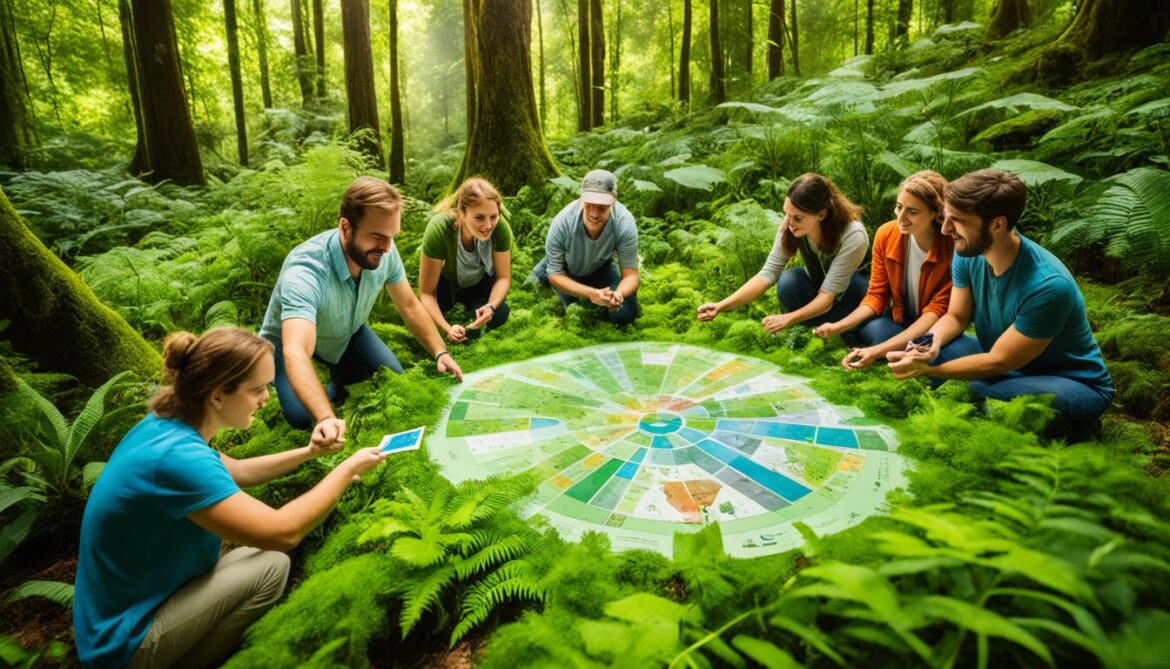
Through education and awareness, we can inspire a sense of responsibility and encourage sustainable practices that are essential for the preservation of biodiversity. By working together, we can create a future where biodiversity thrives and coexists harmoniously with human activities.
Strengthening Resilience for a Sustainable Future
Building resilience for a sustainable future requires various strategies. By implementing nature-based solutions and empowering local governments, we can create a more resilient and biodiverse environment. Let’s explore key approaches that can help us achieve this:
1. Establishing Biodiversity Corridors
Biodiversity corridors are crucial in connecting fragmented habitats, allowing species to move freely and ensuring genetic diversity. These corridors serve as essential pathways for wildlife, enabling them to adapt and thrive in the face of changing environmental conditions. By preserving and establishing new corridors, we can protect habitats and promote the long-term survival of diverse plant and animal species.
2. Empowering Local Governments
Local governments play a vital role in biodiversity conservation. By empowering them with the necessary resources, knowledge, and authority, we can ensure that conservation efforts are effectively implemented at the grassroots level. Local governments can engage in habitat preservation, sustainable land use planning, and the enforcement of regulations to protect biodiversity hotspots and critical ecosystems.
3. Increasing Biodiversity Financing
Robust biodiversity financing is essential for the successful implementation of conservation projects. Governments and organizations need to allocate sufficient financial resources to protect and restore ecosystems. Investing in biodiversity conservation not only preserves natural resources but also contributes to sustainable development and the well-being of local communities.
4. Implementing Nature-Based Solutions
Nature-based solutions harness the power of ecosystems to address environmental challenges. By restoring and protecting natural habitats such as forests, wetlands, and coral reefs, we can enhance resilience to climate change, mitigate natural hazards, and improve water and air quality. Nature-based solutions provide multiple benefits, including carbon sequestration, biodiversity preservation, and the provision of ecosystem services.
“Nature-based solutions harness the power of ecosystems to address environmental challenges.”
By adopting these strategies, we can build resilience and ensure a sustainable future for both biodiversity and human well-being. It is through collaborative efforts, innovative approaches, and a commitment to conservation that we can overcome the challenges ahead.
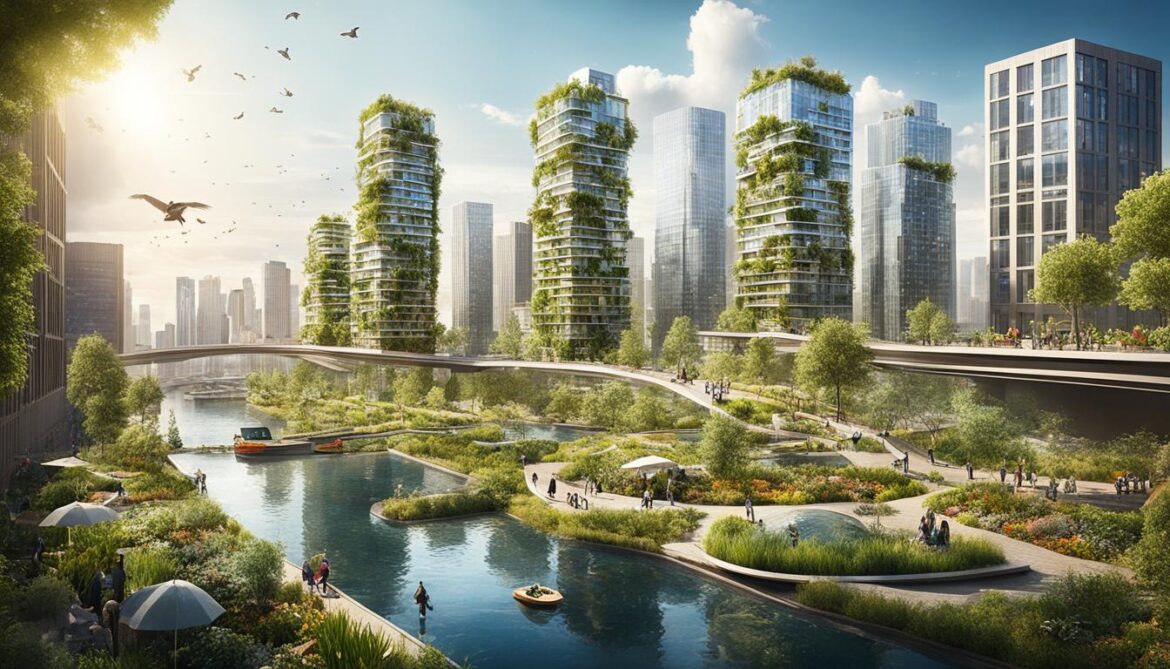
Conclusion
The Philippines is blessed with abundant biodiversity, making it a valuable resource for the planet. To ensure a sustainable future for both biodiversity and human well-being, it is imperative to prioritize conservation efforts through collaboration and sustainable practices. By protecting and preserving the unique plant and animal species found in the Philippines, we can uphold its status as a biodiverse hotspot and contribute to global conservation endeavors.
Conservationists, researchers, and stakeholders must work hand in hand to develop and implement effective strategies. Through collaborative initiatives and partnerships, we can strengthen conservation efforts and address key challenges such as habitat loss, climate change, and unsustainable human activities.
Furthermore, sustainable land use practices, education, and awareness play pivotal roles. By promoting sustainable practices among local communities and integrating biodiversity considerations into business models, we can foster a culture of environmental stewardship. Additionally, empowering indigenous and local communities, who possess invaluable traditional knowledge, can significantly contribute to the preservation of biodiversity.
By embracing the principles of collaboration and sustainability, the Philippines can chart a path towards a sustainable future. This not only safeguards its rich biodiversity but also ensures the well-being and prosperity of current and future generations. Let us all join hands in our shared commitment to preserving the Philippines’ unique natural heritage and making a positive impact on the global conservation landscape.






